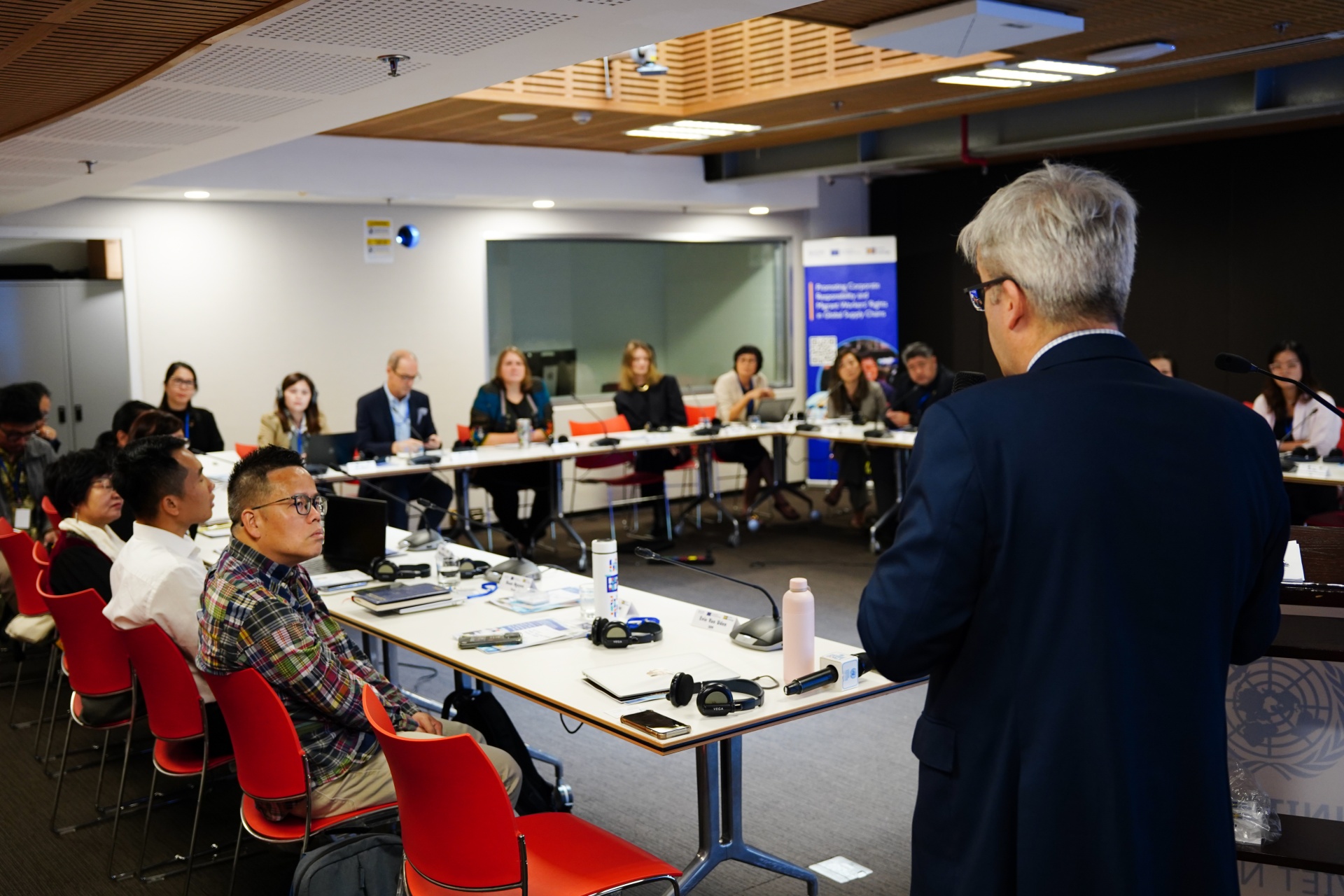Why a small change in paperwork is generating a big fight over hazardous waste in California – CalMatters

Report on Proposed Changes to California’s Hazardous Waste Manifest Rule and Implications for Sustainable Development Goals
Introduction: Regulatory Reform and Sustainable Waste Management
The California Department of Toxic Substances Control (DTSC) is evaluating a proposal to amend its hazardous waste tracking regulations, known as the manifest rule. This change would exempt certain on-site and intra-property transport of hazardous materials from current tracking requirements. This report analyzes the proposed change, stakeholder perspectives, and its direct implications for achieving several United Nations Sustainable Development Goals (SDGs), particularly those concerning public health, environmental protection, and institutional accountability.
Analysis of the Proposed “Manifest Rule” Exemption
Proponents’ Rationale: Efficiency and Safety
Supporters of the rule change, including the University of California system and corporations like Tesla and PG&E, argue that the exemption will enhance operational efficiency and safety. Their position is based on the following points:
- Consolidation of Waste: The change would permit the consolidation of small amounts of hazardous waste at central locations on a property before requiring a manifest for off-site transport.
- Reduced Vehicle Traffic: This consolidation would decrease the number of large truck trips required for waste collection, aligning with goals for sustainable urban environments under SDG 11 (Sustainable Cities and Communities).
- Streamlined Processes: Proponents assert that reducing administrative burdens allows for a more efficient focus on the core tenets of SDG 12 (Responsible Consumption and Production), specifically Target 12.4, which calls for the environmentally sound management of chemicals and wastes.
Concerns and Opposition: Risks to Public Health and Environmental Safety
Environmental advocacy groups, including Earthjustice, express significant concerns that the proposal represents a weakening of regulations that could undermine key SDGs. Their primary arguments are:
- Public Health Risks: Untracked transport of hazardous materials, even over short distances, increases the risk of accidents and public exposure, directly contravening SDG 3 (Good Health and Well-being).
- Lack of Transparency: The DTSC has not publicly identified the approximately 235 facilities that would benefit from the exemption, raising concerns about institutional transparency and accountability, which are central to SDG 16 (Peace, Justice and Strong Institutions).
- Potential for Non-Compliance: Critics fear the exemption could create confusion and “lawlessness,” leading to improper handling and disposal of waste, thereby threatening progress on SDG 12 and SDG 6 (Clean Water and Sanitation) through potential contamination.
Broader Context: California’s Waste Management and SDG Alignment
State-Level Challenges in Achieving SDG 12
The proposed rule change occurs within a challenging statewide context for hazardous waste management. California faces significant hurdles in meeting its commitments to sustainable development, particularly SDG 12.
- Diminishing Capacity: The state has only two landfills capable of accepting the most toxic waste, with capacity expected to be reached by 2039.
- Export of Waste: A significant portion of California’s hazardous waste is transported to other states, often with less stringent environmental regulations, which conflicts with the principle of responsible domestic waste management under SDG 12.
- Deregulatory Trend Concerns: Advocates fear this proposal is part of a broader DTSC strategy to weaken regulations as a means of managing the state’s growing waste problem, rather than focusing on waste reduction and sustainable treatment solutions.
Conclusion: The Path Forward for Sustainable Waste Governance
The debate over California’s manifest rule highlights a fundamental tension between operational efficiency and the robust environmental and public health protections required to meet the Sustainable Development Goals. While proponents frame the change as a step toward more efficient waste handling, opponents view it as a deregulatory action that compromises safety, transparency, and accountability. A sustainable path forward necessitates a governance model that prioritizes the principles of SDG 3, SDG 11, SDG 12, and SDG 16, ensuring that any regulatory reform strengthens, rather than weakens, the state’s commitment to protecting its communities and environment from the cradle-to-grave impacts of hazardous waste.
Analysis of Sustainable Development Goals in the Article
1. Which SDGs are addressed or connected to the issues highlighted in the article?
- SDG 3: Good Health and Well-being: The article connects to this goal through its discussion of managing hazardous waste to protect public safety. The manifest system is described as a tool that “help(s) fire departments and other responders keep the public safe” in case of an accident, directly relating to preventing illnesses and harm from chemical exposure.
- SDG 11: Sustainable Cities and Communities: The management of hazardous waste generated by universities, industries (like Tesla and Ecobat), and utilities (PG&E) within or near communities is a central theme. The article notes that waste may travel “along the perimeter of campus where homes and schools are located,” highlighting the direct impact of waste management on urban and community environments.
- SDG 12: Responsible Consumption and Production: This is the most prominent SDG in the article. The entire discussion revolves around the “environmentally sound management of chemicals and all wastes,” California’s “toxic trash problem,” landfill capacity, and the state’s goals to “reduce the amount of waste that is burned or goes to landfills.”
- SDG 16: Peace, Justice and Strong Institutions: The article addresses this goal by examining the role and transparency of a state regulatory body, the Department of Toxic Substances Control (DTSC). Concerns from environmental advocates about the DTSC’s lack of transparency (“the department is sharing little information”), the absence of a presentation at a public hearing, and the fear of a “deregulatory approach” all point to issues of institutional accountability and participatory decision-making.
2. What specific targets under those SDGs can be identified based on the article’s content?
-
Target 3.9: By 2030, substantially reduce the number of deaths and illnesses from hazardous chemicals and air, water and soil pollution and contamination.
- The article’s focus on the manifest rule as a safety measure directly supports this target. The fear that weakening the rule could make waste transport “vulnerable to an accident” implies a direct link between the regulation and preventing chemical contamination and subsequent harm to human health.
-
Target 11.6: By 2030, reduce the adverse per capita environmental impact of cities, including by paying special attention to air quality and municipal and other waste management.
- The debate over how to manage waste generated by large entities like the University of California system, Tesla, and PG&E within populated areas is a direct reflection of this target. The goal is to handle this waste efficiently and safely to minimize negative impacts on surrounding communities.
-
Target 12.4: By 2020, achieve the environmentally sound management of chemicals and all wastes throughout their life cycle… and significantly reduce their release to air, water and soil in order to minimize their adverse impacts on human health and the environment.
- This target is central to the article. The discussion about tracking hazardous waste “from cradle to grave,” the debate over weakening manifest rules, and the problem of landfill capacity are all components of achieving environmentally sound waste management.
-
Target 12.5: By 2030, substantially reduce waste generation through prevention, reduction, recycling and reuse.
- The article references this target by mentioning the state’s broader hazardous waste plan, which includes a goal to “reduce the amount of waste that is burned or goes to landfills.” It also notes that while the amount of waste has decreased, the number of generators has doubled, indicating an ongoing challenge in waste reduction.
-
Target 16.6: Develop effective, accountable and transparent institutions at all levels.
- This target is highlighted by the criticism leveled at the DTSC. The article states, “the department is sharing little information about exactly which facilities will stop reporting” and that at a public hearing, “regulators gave no presentation.” This points to a perceived lack of transparency and accountability.
-
Target 16.7: Ensure responsive, inclusive, participatory and representative decision-making at all levels.
- The article mentions the “only public hearing on the rule change” and quotes advocates expressing their concerns, such as Rebecca Overmyer-Velázquez, who fears the change will lead to “confusion and lawlessness.” This demonstrates the process of public participation in decision-making, even as advocates question its effectiveness.
3. Are there any indicators mentioned or implied in the article that can be used to measure progress towards the identified targets?
- Amount of hazardous waste generated: The article explicitly states that “the amount of hazardous waste generated in the state has decreased by more than 40%” in the last 25 years. This is a direct indicator for Target 12.5.
- Number of hazardous waste generators: The article mentions that “the number of hazardous waste generators has doubled,” which provides context for the challenge of managing waste and serves as an indicator related to Target 12.5.
- Hazardous waste landfill capacity: The article notes that the two landfills for the most toxic trash “will reach capacity by 2039.” This is a critical indicator for measuring the sustainability of current waste management practices under Target 12.4.
- Proportion of hazardous waste exported: The finding that “nearly half of it is driven to states that have weaker environmental protections” is a key indicator of the state’s capacity to manage its own waste, relevant to Target 12.4.
- Number of facilities affected by regulation changes: The article states the rule change would apply to “about 235 hazardous waste producers.” This number serves as an indicator of the scope of the regulatory change, relevant to monitoring the impacts on Targets 3.9 and 12.4.
- Public participation in regulatory processes: The mention of the “only public hearing” and the active participation of environmental groups like Earthjustice and community coalitions implies an indicator for Target 16.7, measuring the level of public engagement in environmental decision-making.
4. Summary Table of SDGs, Targets, and Indicators
| SDGs | Targets | Indicators |
|---|---|---|
| SDG 3: Good Health and Well-being | 3.9: Substantially reduce deaths and illnesses from hazardous chemicals and pollution. | Implied: Number of accidents/spills during hazardous waste transport, which the manifest rule is designed to mitigate. |
| SDG 11: Sustainable Cities and Communities | 11.6: Reduce the adverse per capita environmental impact of cities, including waste management. | Implied: Proximity of hazardous waste transport routes to homes and schools. |
| SDG 12: Responsible Consumption and Production | 12.4: Achieve environmentally sound management of chemicals and all wastes. |
|
| 12.5: Substantially reduce waste generation. |
|
|
| SDG 16: Peace, Justice and Strong Institutions | 16.6: Develop effective, accountable and transparent institutions. | Implied: Availability of public information from regulatory bodies (e.g., list of 235 qualifying facilities, which was not provided). |
| 16.7: Ensure responsive, inclusive, and participatory decision-making. | Mentioned: Number of public hearings held on rule changes (one was held). |
Source: calmatters.org
What is Your Reaction?
 Like
0
Like
0
 Dislike
0
Dislike
0
 Love
0
Love
0
 Funny
0
Funny
0
 Angry
0
Angry
0
 Sad
0
Sad
0
 Wow
0
Wow
0



















































.jpg.webp?itok=0ZsAnae9#)

























